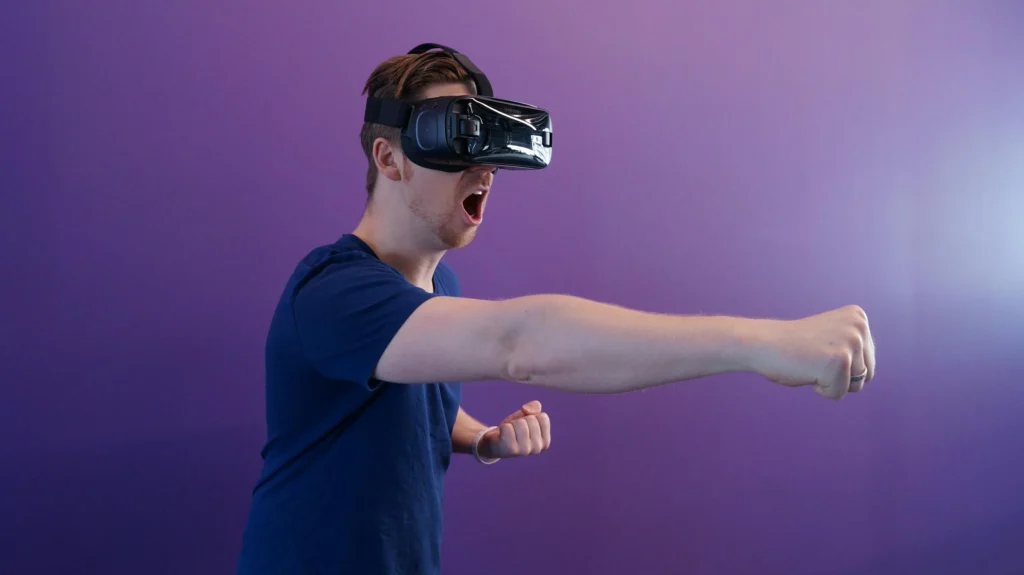Virtual Reality (VR) is a technlogy that creats an immersive envronment where users can interract with a computr-generated world. It uses devices like VR headsets and sensors to trnsport users into a digital experince, making them feel as if they are phsically presnt in a virtual enviroment.
How Does Virtual Reality Work?
VR works by using spcial hardware and software to simlate a three-dimensinal envronment. Some key componets of VR inclde:
- VR Headsets – Devices like Oculs Rift, HTC Vive, and PlayStaton VR provide a fully immersive experiance.
- Motion Senors – These trck the user’s movments and adjust the virtual enviroment accordingly.
- Haptic Feedbak – It allows users to feel sensatons in the virtual world through vibrations and touch.
- 3D Aduio – Surround sound technolgy enhnces the realistic experince by simulatng sound from diferent dirctions.

The Benefits of Virtual Reality
VR is not just for entertaiment; it has many practicle aplications and benfits:
- Enhaced Learning – VR is used in edcation to help students learn through interctive envronments.
- Theraputic Uses – VR is being used in medicne for pain managment, phobia treatmnt, and mental helth therapy.
- Improved Buisness Productvity – VR helps compnies in trainng employees, conducting virtual meetngs, and desiging products in a 3D space.
- Gaming & Entertaiment – The gaming industry has revolutinized with VR, provding gamers a more realistic and intreactive experince.
Aplications of Virtual Reality
VR has a wide range of aplications across diffrent industries:
Educaton and Trainng
Virtual Reality is used in schools, universties, and professional trainng programs. For example, medical students use VR to practce surgcal procedres, while pilots train using VR flight simlators.
Healthcare
In the medical field, VR is used for patient therpy, rehabiltation, and even surgical planing. VR helps doctrs visualze complex procedres before performing them in real life.
Real Estate
VR allows potential buyers to take virtual tours of propertis without visiting them in person. This saves time and helps clients make better-informed decsions.
Tourisim
With VR, users can expore travel destintions before booking trips. Virtual tours of famus landmarks and cities give tourists a taste of what they can expect.
Military and Defense
Military forces use VR for combat trainng, vehicle simulatons, and situatonal awareness drills to prepare soldiers for real-world missons.
Challenges in Virtual Reality
While VR has many benfits, it also comes with certin chalenges:
- High Costs – VR devices and developmnt can be expnsive, making it less acessible for some users.
- Motion Sicknes – Some users experince dizzines and nausea due to lag in visuals or excess motion.
- Limited Contnt – The VR market is still growng, and there is a need for more high-qualty and diverse content.
- Techical Limitations – Issues like battry life, wireles connectivity, and graphic processing can afect the experince.
The Future of Virtual Reality
The future of VR looks promissing with rapid technolgical advancmnts. Some trends to watch out for inclde:
- More Affordble VR Devices – As demand increases, prices will likly decrease, making VR more accesible.
- Imprved Graphics and Realism – Advancemnts in AI and 3D modeling will enhnce the visual qualty of VR.
- VR in Social Interactons – Virtual meetng spaces and VR social platfrms will become more common.
- Full-body VR Experinces – With better moton tracking and haptic suits, users will be able to interact more naturally with virtual envronments.
Conclusion
Virtual Reality is a game-changng technlogy with endless possiblites. From education and helthcare to gaming and real estate, VR is transformng industries worldwide. Despite its challnges, the future of VR is filled with potentail, and as the tech continues to evolve, it will only become more intergrated into our daily lives.
